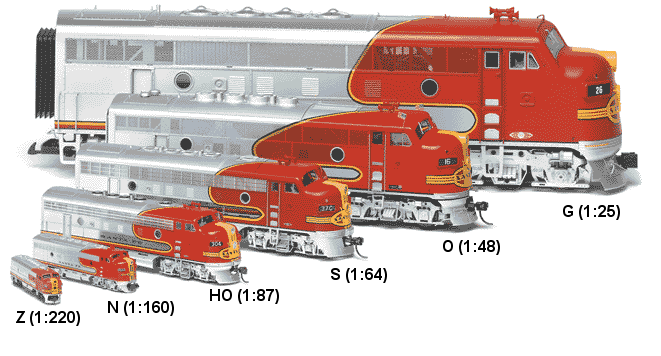Why O-Scale?
Return to Fairchild Junction
|
Why O-scale?
Let's start with a brief history of my life and model trains... When I was a toddler, I caught pneumonia one Christmas. It was bad enough that a doctor had to make a house call - imagine that. I received an Marx O-scale train that year. A simple 0-4-0 engine with plastic cars and plastic everything else. That was my first train. Flash forward, and I always collected train stuff of all kinds. I loved visiting, watching and reading everything I could related to trains. Most every year at Christmas I would end up getting a train set. Eventually my dad made me a 4 x 8 board that I could use to build a layout. At that point I was into HO, mostly because that's what the majority of "full sets" came in. HO (Half-O) is a great size. It allows for great detail and doesn't take up much room. A couple layouts here and there, and HO was my thing. Then into high school, I really started to get into N-scale. N (1/4 the size of O) is really an adorable size. It allows for relatively good detail and you can fit a LOT on a 4 x 8 board. For many, many years I had that N-scale layout, but in the course of forging my place in this world, model railroading took a back burner to other things. In the meantime, there was also Z, and now T scales, and while those are even cuter, the detail goes downhill very fast, so they were never for me. In the early 2000's, I had come across a RailKing set at Sears one Christmas. It was O-scale, and wasn't very expensive, so I figured what the hell. Besides, it had been decades since I had a train around my Christmas tree. This was the C&NW engine which I still have today. Sure it was a really cheapie engine, but it ended up rekindling the spark. Once I learned about what trains today could do, especially with Proto-Sound 2.0 and DCS, I was back in the game. So, again, why O-scale? Here's how it looks compared to the other major scales.  |
|
|
Return to Fairchild Junction
Go to our main page